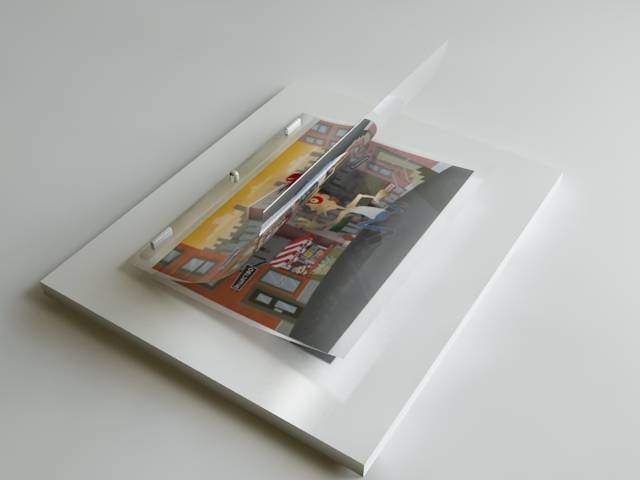Over the past two decades, the use of digital effects in narrative cinema has largely become self-evident and indispensable in genres that traditionally rely on special effects. The boundary between real film and animation company is increasingly dissolving, with some film historians already arguing about whether real film is being swallowed by animated film or vice versa.
Filmmakers have experimented with tricks since the invention of cinema, but a look back also shows that there have always been mixed forms in film history. Thus J. Stuart Blackton, in his haunting story The Haunted House (USA 1907), allowed actors to encounter magical objects that moved by themselves with the help of the stop-motion technique.
Surprisingly, the staging challenges arising from such live action/animation films have hardly changed to this day: Even with the latest computer effects, the question still arises as to how convincingly real and animated elements interact with each other. The most important “element” remains the actor or actress.
The fantastic should look real
Essentially, two trends can be distinguished in the combination of animated and real film. The first is: the fantastic should appear real. A classic example from the era of analogue cinema is King Kong and the White Woman (King Kong, Merian C. Cooper, Ernest B. Schoedsack, USA 1933), for which a model of the giant ape was animated frame by frame. For the scenes in which Kong with the white woman Fay can be seen, Willis O’Brien, Head of Visual Effects, resorted to another trick: he filmed the actress against a neutral background and then projected her image onto a semi-transparent screen within the scenery in which the monkey puppet also “moved”.
This complex process was only replaced in the 1970s by so-called animatronics, electronically controlled models such as E.T. – Der Außerirdische ( E.T.: The Extra-Terrestrial, Steven Spielberg, USA 1982), before the computer finally opened up an almost endless world of possibilities for cinema.
Trick in children’s films
In films such as A Piglet named Babe (Babe, Chris Noonan, Australia, USA 1995) and Piglet Wilbur and his friends (Charlotte’s Web, Gary Winick, USA 2006), on the other hand, childlike and adult actors act alongside trained animals whose faces were given a human expression through digital post-processing.
The leap into the fantastic
The second tendency in the combination of real and animated film is that the real serves as a stepping stone into the fantastic. This is most obvious in early animated films such as Max Fleischer’s animated series Out of the Inkwell, produced in the USA from 1919 onwards, in which the cartoon character Koko, the clown, acts against real backgrounds.
In the midst of a real cityscape, Fleischer was able to demonstrate that his figure, and thus animated film itself, were not subject to the laws of the physical world. Seventy years later, this self-reflexive principle is reflected in False Play with Roger Rabbit (Who Framed Roger Rabbit, Robert Zemeckis, USA 1988), which is full of relish and heightened.
Here live the heroes of the classic animated cartoons as film actors in Hollywood of the 1940s. Their home Toontown is crossed by a magic threshold, which is also crossed by the title hero from James and the Giant Peach (James and the Giant Peach, Henry Selick, GB, USA 1996). After the death of his parents he lives in a dreary reality and flees into a fantasy world populated by giant insects and beetles. In the Soviet Hans Christian Andersen film adaptation The Snow Queen (Snezhnaya koroleva, Gennadi Kazansky, USSR 1966), on the other hand, the fairy-tale setting ensures that the animated scenes fit naturally into the real film plot.

Acting in front of the Blue Screen
Wrong play with Roger Rabbit is one of the last mixed films in which the animated part was created analogously, in this case drawn by hand. Today, mythical creatures or fantastic landscapes can be designed in a realistic manner and then copied into the shots with living actors. To do this, however, they must move against a green or blue background, the green or blue screen, which can be removed from the image in the computer and replaced by any number of shots.
Despite this immense leap in development, nothing has changed in the basic difficulty that actors have to interact in a vacuum or with a non-existent counterpart. Both Robert Zemeckis, director of False Play with Roger Rabbit, and his lead actor Bob Hoskins had only a vague idea during the shooting of what the finished shots would look like.
A frequently used stopgap solution are actors who “step in” for the animated characters and are later retouched out in the computer. In rare cases, such as Steven Spielberg in Jurassic Park (USA 1993), directors resort to animatronics to temporarily enable their actors to physically touch the otherwise digital being.





